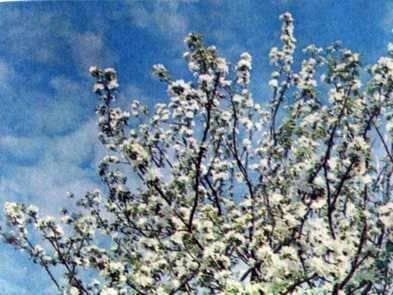
In early spring, a lot of nectar is given by willow. Descended the spring waters. Still hollowed around, and in shallow, damp places the willow bushes became golden. Summer inconspicuous, now they stand out among still undeveloped vegetation. Gently-yellow lambs of flowers and the smell of nectar, they beckon honey bees. A family of willow trees is rich. Iva-bredina, willow goat, willow-eared willow, numerous calves, vines, willows… Willows blossom for a long time, about a month, and in abundance give bees nectar and pollen. On a good warm day in places overgrown with willow trees, strong families bring in 5-6 kg of nectar. During the flowering time of these excellent plants, 25 kilograms weight gain control hives are known. The nests are renewed, the nests grow lighter, the honeycomb is poured brightly, smelling of the vine with willow honey. Unfortunately, the weather in the spring is unstable, the heat is short. Often, just during the blossoming of willow trees, cold returns. They interrupt honey collection. Nectar remains in the flowers. In such weather, neither bees nor other insects can take advantage of the wonderful gifts of nature. But the maple blossoms later. These are also good medonosy. Particularly prominent are the maple, Tatar, and field maples. Maple is hollow – a mighty, slender tree. Everyone knows his wide, five-fingered leaves, like the rest of maples, especially beautiful in autumn. And in the spring the maple is no less beautiful with its flowers. Look at the inflorescence, and you will see shiny beads in the sun – droplets of nectar. Almost two weeks, while he blossoms, bees swarm in his crown. In the deciduous forests, where there are many, bees store a lot of honey. Appreciate beekeepers and Tatar maples. This is a bush. Its flowers are not greenish-yellowish, as in the maple-leaf, but white, elegant. Therefore, it is bred as an ornamental plant. Wherever there are thickets of this shrub, bee colonies bring 5-6 kg of nectar per day. And he blossoms about 10 days. It can be propagated by seed-fishes. When the gardens bloom, for bees – a real feast. They swarm in gooseberries, they visit each flower ten times, and always gives them nectar. Full of bees and in the bushes of currants. In white decoration plum, cherry, cherry, apricot. And then they fly from flower to flower, from branch to branch. Next, the buds of pears and apple trees are opening – the main representatives of the gardens. In their gentle pink boiling from morning to night, bees are drunk, intoxicated with curative May nectar. During the flowering of the orchards, the families grow in front of their eyes. Every day the control hive becomes heavier. At the end of the day, hives buzz like engines. These bee-blowers evaporate water from nectar. Close your hand to the tap hole, and you will feel a trickle of warm air, which is chased from the hive. For the beekeeper is very joyful time flowering orchards. After the fruit trees bloom, the bees begin to visit the yellow and white acacias. These are excellent melliferous plants. The bees come with a yellow back, which means that honey collection has begun from the yellow Siberian acacia. It usually happens a lot – on the streets, along roadsides, slopes, ravines and beams. In the Altai, where the mountains are covered entirely with this shrub, families collect honey from the acacia. Acacia white is even more honey. Her drooping fragrant bunches are full of nectar. During 12-14 days of flowering of this plant, the bees literally fill the nests with light honey as a tear with a delicate aroma. Southern beekeepers try to increase bee colonies by the beginning of flowering of the white acacia, so as not to miss a single good time. In June, a lot of nectar bees are harvested from meadow grasses. Where there are dry, flood or mountain meadows, there is always honey. They amaze with the richness and variety of plants. This is a multi-colored carpet. Among the many meadow honey-combs for bees, white and pink clovers, meadow cornflowers, sage, geranium, mouse peas, and oregano are especially valuable for bees. These plants bloom for a long time. Honey from meadow motley grass is amber, fragrant, pleasant to taste, very healing. Particularly peculiar honey from the Alpine and subalpine mountain meadows. Among the many meadow honey-combs for bees, white and pink clovers, meadow cornflowers, sage, geranium, mouse peas, and oregano are especially valuable for bees. These plants bloom for a long time. Honey from meadow motley grass is amber, fragrant, pleasant to taste, very healing. Particularly peculiar honey from the Alpine and subalpine mountain meadows. Among the many meadow honey-combs for bees, white and pink clovers, meadow cornflowers, sage, geranium, mouse peas, and oregano are especially valuable for bees. These plants bloom for a long time. Honey from meadow motley grass is amber, fragrant, pleasant to taste, very healing. Particularly peculiar honey from the Alpine and subalpine mountain meadows.
Как навить пружину на токарном станке. Коптим сливу.
Young Beekeeper